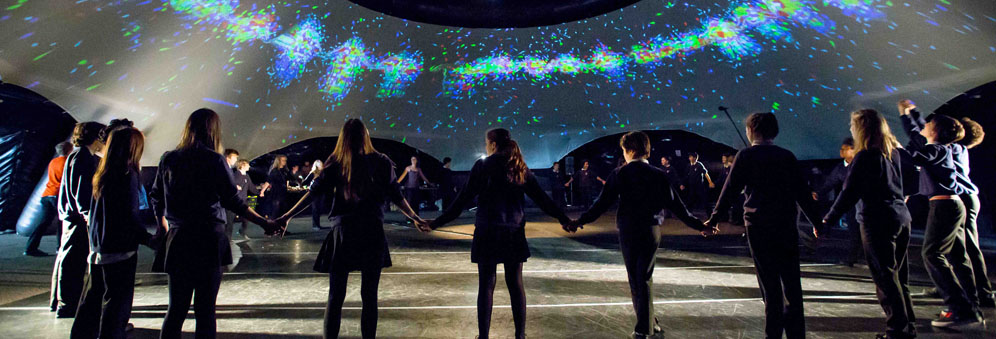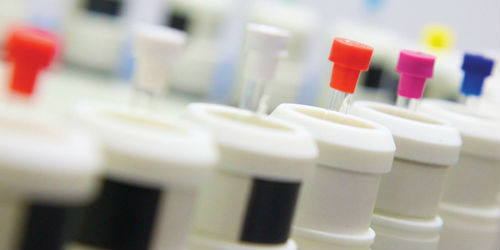Danceroom spectroscopy
Using interactive high-performance computing to visualise molecular dynamics and inspire thousands of people with the beauty of the microscopic world.
“dS is profoundly cross-disciplinary, combining physics, chemistry, computer science, human-computer interaction, art, and music.
It offers a brilliant ‘way in’ to complex chemistry and physics for people who are often hard to reach, such as teenagers, clubbers, festivalgoers, and those interested in art.
The majority of dS participants indicate that they come from arts backgrounds, with little exposure to science.” - Dr David Glowacki
Explaining to a lay audience how molecules interact with each other without using baffling jargon is a challenging task. “The idea for danceroom Spectroscopy (dS) arose from trying to explain to my friends and family my molecular dynamics research projects” says Dr David Glowacki from the University of Bristol’s Department of Chemistry.” I realised that dance actually utilised a number of metaphors which were useful for explaining dynamical systems”.
dS is a novel combination of 3D imaging, real-time high-performance computing and rigorous physics, which interprets the human form as a real-time energy field. As people move, their energy moves, manipulating a simulated atomic world. Since Glowacki set up dS in 2011, the shapes and sounds created during this process have captivated audiences world-wide and given them a glimpse into the world of atomic and molecular physics. It was even performed at the London 2012 Olympics, and has also won many awards.
To date, more than 100,000 people have experienced danceroom Spectroscopy (dS) with audiences spanning ages from 3 to 73.
dS evolved out of discussions that Glowacki had with colleagues from the School of Chemistry Laser Group. Professors Mike Ashfold and Andrew Orr-Ewing were amongst the first in the UK to use digital imaging methods to investigate gas phase reaction dynamics and Glowacki collaborated closely with them to show that chemical reactions in liquids give rise to products with significant quantum state excitation.
Glowacki became aware of the in-house experience with imaging methods, and recognised the possibility of combining ideas from real-time imaging with his molecular dynamics algorithms to build a real-time interactive system.
“I never dreamed this work would result in artistic outcomes,” said Glowacki. “The cultural impact has been more than I could ever have wished for. As well as the audiences we have reached, the impact has extended to the team who put dS together. Computer programmers, dancers, choreographers, artists, educators, musicians, film makers and music technologists now have a better understanding of the dynamics of the invisible molecular world!”
The project has also had an unexpected but important impact on the field of molecular dynamics research. The algorithms which drive dS are taken from software and methods developed by Glowacki in order to understand the fundamentals of chemical reaction dynamics and energy transfer in liquids.
These algorithms are combined with data streams from 3D sensors to track human movement.
“We realised that we needed to make the algorithms run very fast so that the dancers and their images could move in real time,” said Glowacki.
“This was a big challenge. We had to build a platform fusing the state-of-the-art in hardware and software to pull it off on something which was also portable. This is a fascinating example where I think it’s fair to say that artistic aims pushed the boundaries of science and engineering.”
These new algorithms are now being used to investigate other problems within molecular dynamics.
Glowacki is still travelling around the world using the technology developed for dS to inspire scientists and artists alike with molecular dynamics and has also made teaching videos for the Royal Society of Chemistry. He is currently working on making the technology even more portable.
“We have received funding from Innovate UK to develop next-generation teaching tools that will help young people to grasp complex science concepts through physically engaging with the subject,” he said.
“School children will be able to place their hands into a platform we’ve dubbed the ‘Nano-Glove Box’ to manipulate atoms and molecules like they would any other virtual object.”

